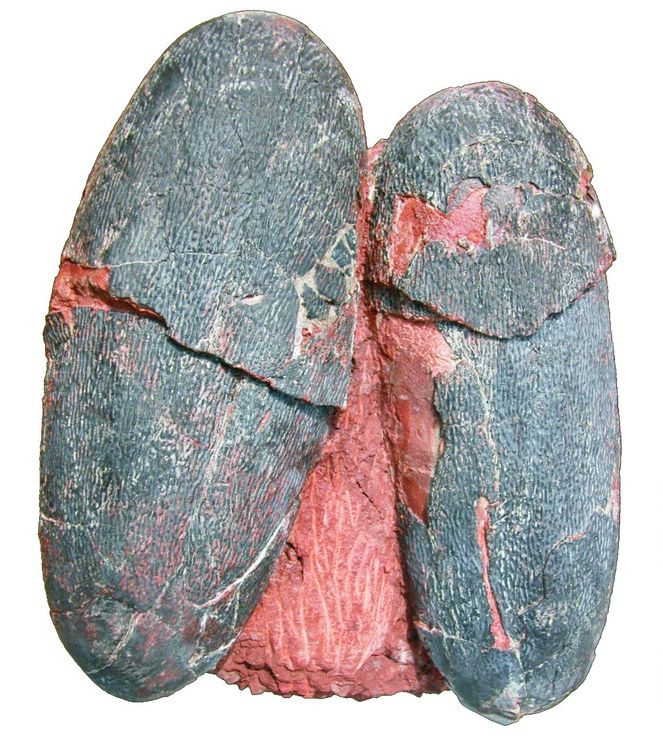Fossils Show Dinosaur Eggs Were Blue, Scientists Say

Scientists have found evidence that dinosaurs laid blue-green eggs, telling us something about the prehistoric creatures’ behavior and challenging what we know about how colored eggs evolved.
The team of researchers chemically analyzed eggshells recovered from the Late Cretaceous period, between about 100 million and 66 million years ago, and found two pigments in the makeup, suggesting that the eggshells were originally blue-green. A study in the journal PeerJ says the eggs, which were in a late stage of embryonic development, came from a species of oviraptor, a group of small theropods with feathers that lived in the area of Mongolia, and were collected from river deposits in eastern and southern China. The fact that the eggs were not white suggests that these particular dinosaur parents used open nests and were not constantly brooding over their unborn babies.
In modern birds, coloring on eggshells provides camouflage or diversion so that open-nesting birds can protect their children from potential predators. According to the study, “cryptic coloration evolved to match the predominant shades of color found in the nesting environment.”
Meanwhile, birds that instead protect their eggs by hovering over them do not have much pigmentation in the shells. Crocodiles, which are close relatives, have unpigmented eggs too; they bury their eggs.
The researchers on this study compared the case of modern birds to those of non-avian dinosaurs that may have had colored eggs. The blue-green eggs for this oviraptor, a creature that had a beak like a parrot and walked on its hind legs, “support an at least partially open nesting behavior for oviraptorosaurs,” the authors wrote.
The two pigments found in the eggshells were protoporphyrin and biliverdin. Those two components can be found in the eggshells of many modern birds.
According to the study, scientists have assumed that egg coloration evolved in the last shared ancestor between birds and crocs.
That coloration would have been passed down in the genes even of birds that developed behavior obviating the need for it. The study gives the example of ostriches, which sit on their eggs. Analysis shows that those eggshells still “contain minor amounts of eggshell pigment.” That lingering amount suggests that evolution gradually reduced the pigment in their eggs because their brooding over their eggs reduced evolutionary pressure on egg-coloring genes.
But this new finding shows a deeper history to the trait than just the last common ancestor of birds and crocodiles. The scientists say it may have evolved when some dinosaurs began building nests that were at least partially exposed, as opposed to burying all their eggs, which was a much more common practice.
“Selection for egg color would only have occurred after the eggs themselves became visible to parents, conspecifics, predators, or parasites,” the authors wrote.
The results of the egg analysis also represent an additional avenue for studying fossils, and the researchers said other fossilized dinosaur eggs could contain evidence of pigmentation.
A report on the research notes that the scientists originally thought a bluish coloring on the oviraptor eggs was from mineralization.
“The result has important implications both for the origin of avian biology and the reproductive biology of theropods dinosaurs,” the study says.
© Copyright IBTimes 2024. All rights reserved.





















